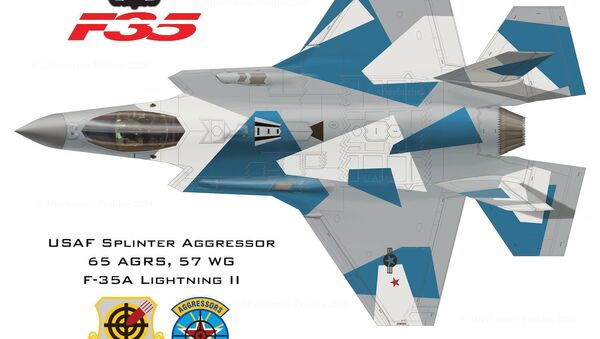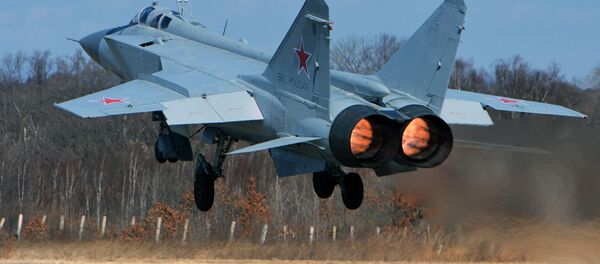US Air Force veteran and aviation artist Sean Hampton has published rendered images of F-35 fighter jets featuring Russian Air Force colour scheme livery.
According to Hampton, the skins were made for the 65th Aggressor Squadron, a specially equipped and trained Air Force unit which simulates the look and behaviour of enemy aircraft and pilots, in this case, the Russians.
Hampton created several variations of the Russian ‘aggressor’-style F-35s, all of them featuring the characteristic Russian red star on its wings, as well as a US Air Force identifier on their left wing. The colour schemes include Arctic, digital pixelated, matte grey/blue, all black, grey-black-white and green-brown-black designs.
The artist teased that the renders were just a “sneak peak,” and noted that his followers should look out for the paint schemes’ official unveiling sometime in 2021.
Last year, Air Force officials confirmed that the 65th Aggressor Squadron, recently reactivated and based at the Nellis Air Force Base in Nevada, would be using “early” model F-35s to simulate “high-end adversary” Russian Sukhoi Su-57 and China’s Chengdu J-20 fifth-generation fighter aircraft.
The US Air Force has a long history of painting aircraft to look like enemy planes, decking out General Dynamics F-16s to look like Su-57s in 2019, and making at least one Navy McDonnell Douglas F/A-18 out to be a Sukhoi Su-30. During the Cold War, the Pentagon amassed an entire fleet of aircraft simulated to look like the enemy at bases in Alaska, Nevada, Virginia and Florida, sometimes even obtaining real foreign aircraft in wars and covert intelligence operations, or during the garage sale of cutting-edge military hardware in Eastern Europe in the 1990s.
Social media users were divided in their appraisal of Hampton’s work. While the artist’s English-speaking Facebook followers praised his work as “incredible”, “uber-impressive” and “amazing”, Russian-language users warily asked what these ‘aggressor’-style planes could be used for.
“They’re preparing them for a provocation,” one paranoid Russian user wrote. “They’ll shoot down some passenger plane. We can only expect dirty tricks from them,” another added. “You don’t need to repaint anything to engage in training,” a third chimed in. “Who is going to be able to see these colours and stars, and where? For a fighter, this plane is just a dot on a radar screen dozen kilometres away before a missile is launched. Real camouflage is when you are a ‘friendly’ on the radar screen,” another suggested.




